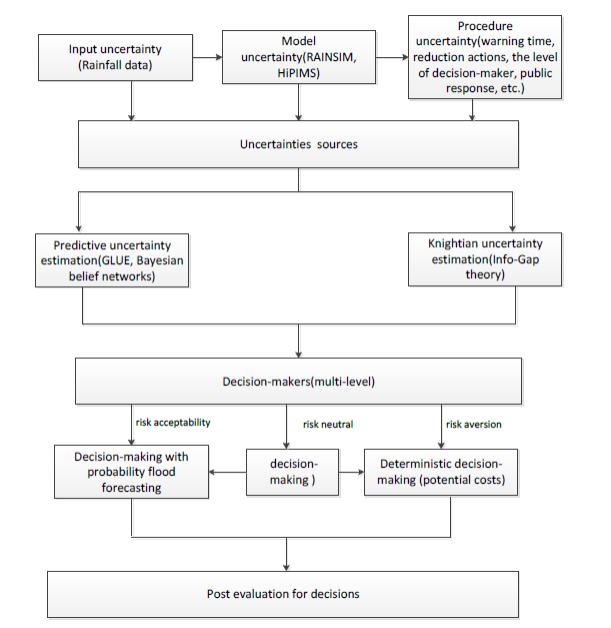Overview
The overall goal of our project is to lay the foundations for a step-change in urban real-time flood forecasting and management practice in China, the UK and beyond.
We aim to promote the evolution from a traditional deterministic approach that is mainly used in China and the UK to a probabilistic approach that can lead to better decisions. We also recognize that the human dimension of decision-making in managing floods, and of citizen responses to warnings, is largely missing from modelling frameworks. These issues are described in more depth here.
To achieve this goal we have identified the following objectives (Figure 1):
- To analyse the decision-making procedures and Risk Response Actions (RRAs) used in real-time urban risk management in Nanjing and to identify the various sources of uncertainty that impact upon the decisions and how they are dealt with.
- To provide this prototype Virtual Collaboratory that allows the exploration of the components of an end-to-end real-time flood forecasting, warning, and decision-making system. It characterizes how uncertainty propagates through the decision-making chain demonstrates outcomes of the decision-making in economic and social terms based on different levels of uncertainty.
- To provide a framework that can demonstrate and promote the benefits of acknowledging uncertainty and using it in decision-making for the city of Nanjing.
This prototype Virtual Collaboratory (VC) creates an environment in which researchers, policy- and decision-makers can gain a better understanding of how uncertainty impacts on decision-making and of how they can use uncertainty information to make better decisions. It aims to demonstrate that there are clear benefits in flood warning performance to be gained from using uncertainty information in the decision-making.
Please read our Methodology which provides details of how we have addressed our goals.

Figure 1. Uncertainty propagation and evaluation in the decision-making process




